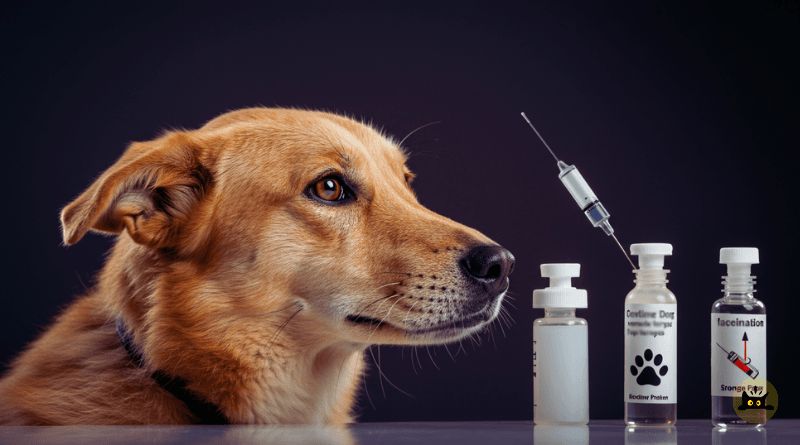Dog Rabies is a critical concern for every caring pet parent. Keeping our furry friends safe is one of our most important goals. We do our best to shield them from car accidents, harmful substances, and falls. However, Dog Rabies is an invisible threat that can have deadly consequences. This guide will help you notice the warning signs early and explain a simple, straightforward vaccine schedule so you can protect your pet and your community.
Spotting the Warning Signs of Dog Rabies
Rabies is caused by a virus that affects your dog’s brain and nerves. Once the warning signs show up, the disease almost always leads to death. Top vet experts, including those from the American Veterinary Medical Association and the Merck Veterinary Manual, explain that Dog Rabies moves through distinct stages. It is important to remember that if your dog suddenly behaves in an unusual way, you should contact your vet immediately.
Early Stage
During the first few days, the signs of Dog Rabies can be very mild. A usually social dog might suddenly seem withdrawn or fidgety. You may notice small changes such as a higher than normal body temperature or that your pet continuously licks or bites the area where it was bitten—even if the wound appears healed. These subtle observations are the body’s first way of signaling that something is wrong.
Furious Stage
In the next stage, what many people traditionally associate with rabies occurs. Your dog might become very aggressive. Instead of its familiar friendly nature, your pet may start biting or snapping at anything that moves. The dog might seem confused, wander without a clear purpose, or lose its natural caution around people and other animals. It can also overreact to everyday stimuli such as bright light, a gentle touch, or even ordinary sounds, and may experience sudden convulsions or fits. Although not every dog will exhibit every symptom, these behaviors indicate serious danger.
Paralytic Stage
In some cases, your dog may enter a stage where it gradually loses control over its muscles. This means that mealtime becomes difficult, as the dog struggles to swallow properly. This stage is recognized by the typical foaming around the mouth—not because of extra saliva, but because the dog simply can’t swallow as it normally would. You might see its face appearing slack or droopy, along with excessive drooling. Weakness in the legs can cause the dog to stumble or even be unable to stand. When the muscles needed for breathing start to fail, the situation turns life threatening.
How Vaccines Can Save Lives
Vaccines are the most powerful tool we have to stop Dog Rabies from affecting our pets. Reliable organizations like the American Kennel Club and the World Small Animal Veterinary Association offer simple and clear guidelines about vaccine shots. Although your vet will give you a schedule tailored to your dog, here’s what a general plan might look like:
Your Puppy’s First Shot Most vets recommend that puppies receive their first rabies shot around 3 to 4 months old. This timing is chosen because a puppy’s developing immune system can handle the vaccine well and build strong protection.
The One-Year Follow-Up About one year after the first shot, a follow-up shot is necessary. This booster helps maintain immunity and ensures that your pet remains protected against the virus.
Extra Shots for Adult Dogs After that, most adult dogs need another shot every one to three years. The frequency depends on the type of vaccine used and the guidelines set by your local authorities. Always check with your vet and follow your local recommendations carefully.
What to Do If You Think Your Dog Might Have Rabies
Even with all the care in the world, you might suddenly notice signs that make you worry. If you suspect that your dog—or even a stray—is showing signs of rabies, remember that your safety comes first. Here are a few straightforward steps to follow:
Keep Your Distance If you observe a dog acting strangely, step away immediately. Do not try to pet or handle the animal, even if it is your own pet.
Secure Your Pet If it is your dog and it’s safe to do so, move your pet into a secure area such as a safe room or a crate. This limits any chance of further exposure.
Call for Help Reach out to your vet and your local animal control services right away. These professionals are trained to handle such situations safely.
If Anyone Gets Bitten Immediately wash the affected area with soap and water for about 15 minutes, then seek medical help promptly.
A Final Note on Safety
Every pet owner wants the best for their furry friend. Following a clear vaccination schedule is one of the easiest and most effective ways to protect your dog from harmful diseases like rabies. In addition, always be alert to any sudden changes in behavior or health. Regular checkups with your vet not only help safeguard your pet but also contribute to a healthier and safer community.
Remember that early detection can make all the difference in protecting your pet. Stay informed, stay observant, and always follow your vet’s advice. Your proactive approach is key to ensuring that your dog stays happy and healthy—even in the face of dangerous diseases.
Sources: The Spruce Pets, National Animal Supplement Council, Morris Animal Foundation
Check out another informative article in this category for more pet health tips : Worried About Dog Nail Trimming? Tips to Do It Safely

